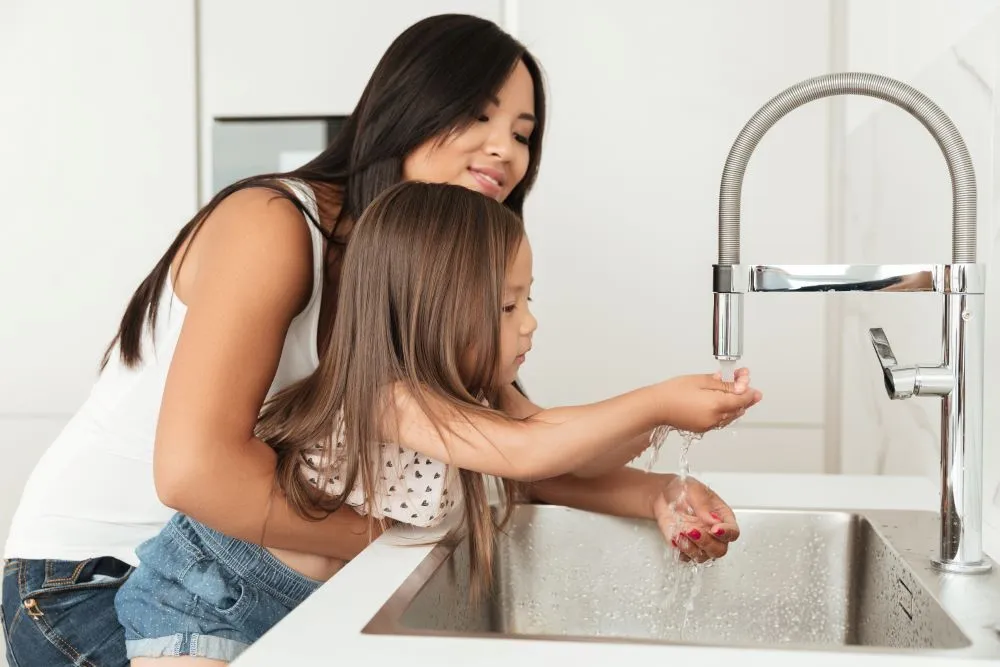What is the walking water experiment? An activity involving two cups, some water and some scientific magic, of course! It’s the perfect, low-cost do-it-yourself experiment for you to try with your kids. If you’ve been looking for a way to introduce your children to basic science concepts through hands-on discovery, the walking water experiment will do the trick.
If you’re wondering if the walking water experiment is just for kids, it’s not! This experiment wows people of all ages. It’s never too late to unlock your inner scientist and nurture your intellectual curiosity. Your kids will love seeing how excited you are.
Keep reading to learn more about how to make water walk.
How to Make Water Walk
This experiment is extremely conservative when it comes to materials and preparation. To set up for this experiment, you will need the following:
- Two glasses of equal size
- Water (any temperature/kind of water works)
- Blue food coloring
- Paper towel
As you can see, this is a very low maintenance experiment. With almost no cleanup, this is the perfect activity to do with your children when you have some free time.
The Walking Water Experiment For Kids: Six Easy Steps
Once you have your materials together, the rest is easy. Follow these simple steps to wow your kids and show them the possibilities of science:
- Set your two identical glasses about 2 inches apart. Pour water into one of the cups until it’s halfway full.
- Add a few drops of your favorite food coloring to the water.
- Stir the food coloring until the water is one color.
- Take a strip of paper towel and fold it until it’s 1 to 2 inches wide.
- Place one end of the paper towel strip into the colored water and the other end into the empty glass. Let them sit for one hour.
- Return to the glass and observe what happened.
Spoiler alert: you will find that half of the colored water traveled to the other side of the cup! The paper towel will also be the same color as the water you started with.
The Rainbow Walking Water Experiment For Kids
If you want to take this experiment to the next level, you can take on the rainbow edition. Place seven cups two inches apart each. Then, follow these instructions:
- Fill the 1st, 3rd, 5th, and 7th cup halfway with water.
- Add five drops of red food coloring to the 1st and 7th cup.
- Add five drops of yellow food coloring to the 3rd cup.
- Add five drops of blue food coloring to the 5th cup.
For this experiment, you need six sections of paper towel. Follow the same protocol as steps four and five from the above directions. Leave the cups alone for one hour, then return to make your observations.
Your kids will be very excited to come back to a fully formed rainbow! As the water travels from one cup to the other, the colors mix. This is also a prime opportunity to teach some art fundamentals: primary and secondary colors. The three primary colors are red, yellow and blue. Secondary colors are shades you can make from the three primary colors, like orange, green and purple.
The Science Behind the Walking Water Experiment
At first, this experiment appears to defy gravity.
How does the water get from one cup to the other? With a little bit of magic called capillary action. Essentially, the adhesive force between the paper towel and the water are more powerful than the cohesive force inside the water itself. This results in the paper towel pulling the water up. The water keeps traveling up the paper towel, across the bridge and into the other cup.
Ready to Try the Walking Water Experiment?
Now that you know how to make water walk, it’s time to introduce your kids to the magic of science. If you think your child would benefit from a more immersive science experience, our science summer camps might be the perfect fit. We also run after-school science clubs for kids demonstrating early signs of scientific interest. If your child is a budding scientist, enrolling them in our club is the best way to nurture their growing brain.

